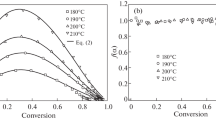Abstract
A solid composite of desirable microstructure can be produced by curing a liquid polymeric suspension in an electric field. Redistribution effect of the field-induced forces exceeds that of centrifugation, which is frequently employed to manufacture functionally graded materials. Moreover, unlike centrifugational sedimentation, the current approach can electrically rearrange the inclusions in targeted areas. The electric field can be employed to produce a composite having uniformly oriented structure or only modify the material in selected regions. Field-aided technology enables polymeric composites to be locally micro-tailored for a given application. Moreover, materials of literally any composition can be manipulated. In this article we present testing results for compositions of graphite and ceramic particles as well as glass fibers in epoxy. Electrical and rheological interactions of inclusions in a liquid epoxy are discussed. Measurements of tensile modulus and ultimate strength of epoxy composites having different microstructure of 10 vol% graphite, ceramic particles and glass fiber are presented.
Similar content being viewed by others
References
W.A. Kaysser and B. Ilschner, FGM research activities in Europe, MRS Bull. 20, 22 (1995).
B.H. Rabin and R.J. Heaps, Powder processing of Ni-Al2O3 FGM, in Proceedings of the Second International Symposium on Functionally Gradient Materials, San Francisco, CA, Nov. 1-4 (1992).
B.H. Rabin and I. Shiota, Functionally gradient materials, MRS Bull. 20, 14 (1995).
T. Jungling and B. Kieback, Ceramic/metal functionally gradient materials by sedimentation, in FGM’94 Symposium, Lausanne, October (1994).
J. Lambros, M.H. Santare, H. Li, and G.H. Sapna III, A novel technique for the fabrication of laboratory scale model functionally graded materials. Exp. Mech. 39, 184 (1999).
N.J. Lee, J. Jang, M. Park, and C.R. Choe, Characterization of functionally gradient epoxy/carbon fiber composite prepared under centrifugal force, J. Mater. Sci. 32, 2013 (1997).
M. Krumova, C. Klingshirn, F. Haupert, and K. Friedrich, Microhardness studies on functionally graded polymer composites, Comp. Sci. Technol. 61, 557 (2001).
A.P. Gast and C.F. Zukoski, Electrorheological Fluids as Colloidal Suspensions, Adv. Colloid Interface Sci. 30, 153 (1989).
T.C. Jordan and M.T. Shaw, Electrorheology, MRS Bull. 16, 38 (1991).
C.A. Randall, D.V. Miller, J.H. Adair, and A.S. Bhalla, Processing of electroceramic-polymer composites using the electrorheological effect, J. Mater. Res. 8, 899 (1993).
W.Y. Tam, G.H. Yi, W. Wen, H. Ma, M.M.T. Loy, and P. Sheng, New electrorheological fluid: Theory and experiment, Phys. Rev. Lett. 78, 2987 (1997).
M.C. Qi and M.T. Shaw, Sedimentation-resistant electrorheological fluids based on PVAL-coated microballoons, J. Appl. Polym. Sci. 65, 539 (1997).
R.C. Kanu and M.T. Shaw, Enhanced electrorheological fluids using anisotropic particles, J. Rheol. 42, 657 (1998).
J.E. Martin and R.A. Anderson, Electrostriction in field-structured composites: Basis for a fast artificial muscle? J. Chem. Phys. 111, 4273 (1999).
L.C. Davis, Model of magnetorheological elastomers, J. Appl. Phys. 85, 3348 (1999).
B. Liu and M.T. Shaw, Electrorheology of filled silicone elastomers, J. Rheol. 45, 641 (2001).
Y.M. Shkel and D.J. Klingenberg, A continuum approach to electrorheology, J. Rheol. 43, 1307 (1999).
G.H. Kim and Y.M. Shkel, Sensing shear strains with electrostriction effect in solid electrorheological composites, J. Intell. Mater. Syst. Str. 13, 479 (2002).
G.H. Kim, Y.M. Shkel, and R.E. Rowlands, Field-aided microtailoring of polymeric nanocomposites, in Smart Structures and Materials Proc. SPIE, 5051, 442 (2003).
T.R. Filanc-Bowen, G.H. Kim, and Y.M. Shkel, Novel sensor technology for shear and normal strain detection with generalized electrostriction, Shear in IEEE International Conference on Sensors, 1648 Orlando, FL (2002).
T.R. Filanc-Bowen, G.H. Kim, and Y.M. Shkel, Shear and normal strain sensing with electroactive polymer composites. in Smart Structures and Materials 2003. Proc. SPIE, 5050 (2003).
C.P. Bowen, R.E. Newnham, and C.A. Randall, Dielectric properties of dielectrophoretically assembled particulate-polymer composites, J. Mater. Res. 13, 205 (1998).
T. Prasse, J. Cavaille, and W. Bauhofer, Electric anisotropy of carbon nanofibre/epoxy resin composites due to electric field induced alignment, Comp. Sci. Technol. 63, 1835 (2003).
D.A. Norman and R.E. Robertson, Rigid-particle toughening of glassy polymers, Polymer 44, 2351 (2003).
J.A. Stratton, Electromagnetic Theory (McGraw-Hill, New York, 1941).
T.B. Jones, J. Dielectrophoretic Force Calculation, Electrostatics 6, 69 (1979).
L.D. Landau and E.M. Lifshitz, Electrodynamics of Continuous Media (Pergamon, New York, 1984).
H.A. Pohl, The Motion and Precipitation of Suspensoids in Divergent Electric Fields, J. Appl. Phys. 22, 869 (1951).
C. Klingshirn, M. Koizumi, F. Haupert, H. Giertzach, and K. Friedrich, Structure and wear of centrifuged epoxy-resin/carbon fiber functionally graded materials, J. Mater. Sci. Lett. 19, 263 (2000).
P.A. Arp, R.T. Foister, and S.G. Mason, Some electrohydrody-namic effects in fluid dispersions, Adv. Colloid Interface Sci. 12, 295 (1980).
J. Happel and H. Brenner, Low Reynolds Number Hydrodynamics (with special applications to particulate media) (Prentice-Hall, 1965).
P.J. Rankin, Y.M. Shkel, D.J. Klingenberg, and J.L. Shohet, Probing aspects of nonlinear conduction in electrorheological suspensions, Int. J. Mod. Phys. B 15, 965 (2001).
L.C. Davis, Polarization forces and conductivity effects in elec-trorheological fluids, J. Appl. Phys. 72, 1334 (1992).
A. Bezryadin, R.M. Westervelt, and M. Tinkham, Evolution of avalanche conducting states in electrorheological liquids, Phys. Rev. E 59, 6896 (1999).
V.G. Levich, Physicochemical Hydrodynamics (Prentice-Hall, NJ, 1962).
Author information
Authors and Affiliations
About this article
Cite this article
Kim, G., Shkel, Y.M. Polymeric Composites Tailored by Electric Field. Journal of Materials Research 19, 1164–1174 (2004). https://doi.org/10.1557/JMR.2004.0151
Received:
Accepted:
Published:
Issue Date:
DOI: https://doi.org/10.1557/JMR.2004.0151




